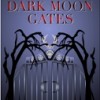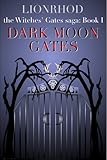Not the Mirror Again! - Describing Your Characters
Tired of the Usual Mirror Scene?
Miranda inspected herself in the mirror. Long blonde hair curled softly around a heart-shaped face. Her best feature was her eyes, wide and liquid brown with golden flecks. Her cheekbones were a bit too high, her nose patrician, her lips slightly too full. She adjusted the neckline of her purple velvet gown, pulling it up slightly to hide her her well-formed bosom. The dress accented the slimness of her waist...
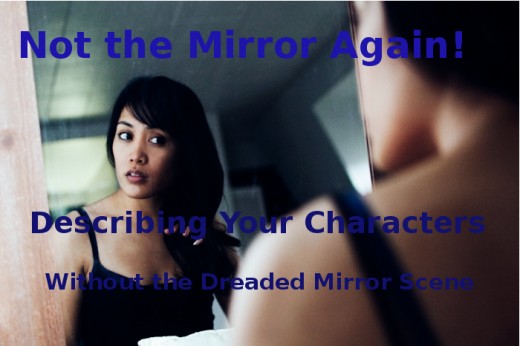
The Dreaded Mirror Scene
Ack! I've read far too many descriptions like this. Romance novels, while not the only ones to blame, are in general the worst offenders.
The above example (made up for the purpose of this article, and thankfully not something I found in a book) tells us what the Miranda looks like, but gives us very little of her character. We know she seems to be concerned about her appearance, and that she's shy about showing her bosom off. That's about all we get beyond basic hair color, eye color and facial shapes.
And seriously - everyone has their own preference, but what in heck does a "well-formed" bosom mean? Is it big, small? A handful or more or less?
In many romance novels it seems to be the convention to describe the main character - who is nearly almost drop-dead gorgeous - in minute detail, from their flowing hair to their tiny waist and long shapely legs. I'll guess this is so that the reader can play "dress up" and live vicariously through the character.
Yet I see this sort of writing in everything from murder mysteries to teen novels. In teen novels, it actually makes a bit more sense. At that age, most of us are concerned about our looks, and terrified of our flaws. So its normal that a teenager would be staring into the mirror, if for no other reason than to deal with their zits.
Is It Necessary to Describe Your Character?
The first question is whether or not it's necessary to describe your character and to what extent. In most genres other than romance, having an exact description of the protagonist is not as imperative.
Some writers feel that the less description they give of their character, the more likely their readers will identify with the protagonist, because the lack of description helps the reader see themself as that character. The more "everyman" or "everywoman" the character, the better, in this mindset.
That's certainly one way to do it.
On the other hand, what we look like often shapes our feelings about ourselves as well as the way others react to us.
In a short story, it might not be necessary to describe your character. A novel length endeavor generally requires that the reader has some at least vague idea of what the characters look like.
Does eye color really matter? REALLY?
In a romance the answer might be yes, since romance is all about the deep eye-gazing. In a hard-boiled detective novel or a horror, eye color isn't nearly as important. Unless the protagonist is recalling the tearful brown eyes of their wife/husband/daughter/son/grandmother as they died tragically.

Describe Quirks and Differences
What makes your character unique and memorable?
Tell us about their quirks - the things that make us understand them as people.
Sue Grafton's detective clips her hair with nail scissors and chooses clothes that don't wrinkle. She's a no-fuss sort of gal, who is far too interested in the latest case to worry much about her attire, though she sometimes bemoans this when it looks like she might get involved in a romance. She's a cheapskate. She's more fashion savvy than she likes to admit, since that wrinkle-free, always-in-the-trunk little black dress works for a hot date, a meet with a lawyer or a high class cocktail party (or funeral) depending on how she accessorizes.
Anne Perry's Inspector Thomas Pitt is notable for the collection of things in his pocket and his forever-rumpled look. Although he was raised alongside the lord's son, we're reminded that he's still a gameskeeper's child, contrasting with the well-clothed gentry he is assigned to investigate.
In the Saint Germain Chronicles by Chelsea Quinn Yarbro, the protagonist's height becomes important because he is a vampire. In the beginning of the series, some 2000 years ago he is a tall man. Centuries later he is of average height, later even small, but wears the commanding air of someone much taller. Normal humans around him expand in height as the series moves forward through the centuries. St. Germain's "differentness" is pointed out by his height relation to the "locals" of any given story. A point that only devotees of the series will "get" but an important point nonetheless.
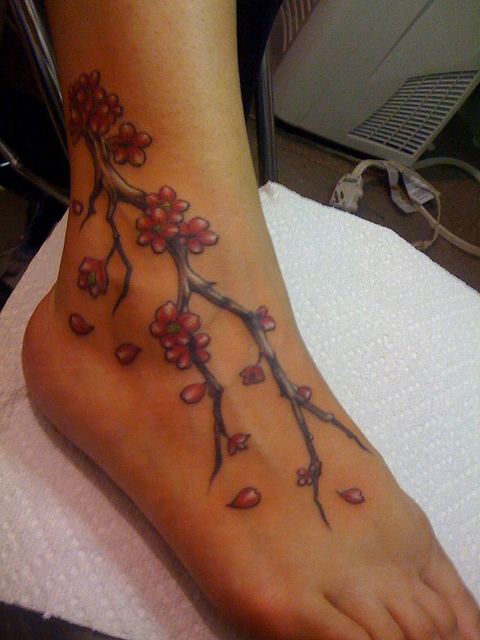
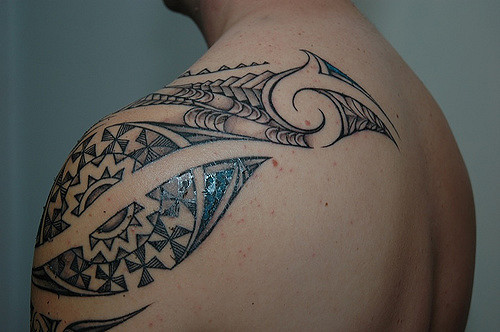
What Do Those Description Choices Mean?
More important than hair or eye color, the choices we make in our dress or hairstyle or body modifications (or lack thereof) say a lot about us..
Does your character have long dangling earlobes from gauging out their ears with larger and heavier earrings/plugs? It's possible that they come from some tribal society where that's the norm. Today it's more likely that they're young, from an artistic upbringing/mindset, and perhaps disrespectful of "normal" society, If they have a job, it's one that can cope with the unconventional.
Are their tattoos expensive and artistic sleeves? (And how did they pay for them?) Prison tats? Military insignias? Fake tattoos? Henna? Each of these choices gives us a different character and mindset.
In the Little House books, it's important for us to know that Laura's hair is "dirt brown" because it illustrates Laura's jealousy of her golden-haired sister Mary. Throughout the series she feels that she is in her sister's shadow. In Little House in the Big Woods, she is irritated that Mary receives a candy heart with a poem on it, while she gets one that says only, "Sweets to the Sweet." It is only as she grows up, and when Mary goes blind that she begins to realize that there are more important things than good looks.
The details you give about your character should be related to the plot and the character's outlook on the world. If not, consider that they may be superfluous. The Miranda example is tedious because it gives very little real personality.
Take a moment and note three details about your character that are important because they either relate to the plot or give the reader a view of how they see the world. Or both!
Your Character Already Knows What They Look Like
I don't need to stand in front of my mirror to tell you that my hair is Chocolate Cherry. (Well that's an old writing, since I've decided to go gray!) The label on my box of dye gives me that information. The fact that my hair is also curly and frizzed becomes pretty obvious when the wind blows it in my face and then I have to spend a half hour undoing the knots. Nor do I need a mirror to show that my eyes are blue-green. I've seen them often enough while I was putting on my contacts.
Unless your character has never seen a mirror or other reflection (likely only in a historical or fantasy) they should be able to describe themselves without the cliche of standing them in front of one.
Self Image
Flaws and how your protagonist reacts to them will often tell more about your character than mere physical description.
Lets say your character is overweight. Do they view themselves as "voluptuous" or "fat"? This may be important to the plot or the characterization because it will affect how they interact with the world. The woman who sees herself as "voluptuous," may have a healthier view of herself. She might dress to proudly show off her ample curves to best effect. In a romantic situation she might be daring, perhaps even willing to be aggressive, because of the value she places on herself. The "fat" woman, might dress in large t-shirts to hide her bulgy parts. She may bemoan her inability to get exercise. She could be shy in bed. She's likely to be more timid socially than her "voluptuous" counterpart.
A person with a facial scar might be shy, feeling that the scar makes them ugly. Or they might view that scar with pride because they survived something horrific. Or they may be unconcerned about the scar, but find that it is disconcerting to others. Perhaps they got the scar from an enemy and it helps them strive toward a goal of revenge. In the last case, they're likely vain, too.
And no, my romance writing buddies, having lips that are "too full" or a mouth that is "too wide" is not a flaw. Just ask Angelina Jolie.
In Dark Moon Gates Willa's eye color actually does matter, because her eyes are bi-colored, which both falls into the prophecy regarding her and her brother and makes her feel like a bit of a weirdo. Plus it gives me an excuse to point up her all-important glasses.
Have you ever used the mirror gag to describe a character?
Small Details Over Time
Rather than giving every detail at once, as in the Mirror Scene, draw out the description over time. Unless there's a reason we need to have a complete description of your character right NOW, you can mention hair color at one point, eye color another time, tiny waist or delicate limbs, sculpted biceps or a potbelly several pages later.
If the detail is important to the plot, it should be covered in the first chapter or so.
In the case of the scarred person seeking revenge (granted that's a cliche too!) this is part of what drives the character. Therefore forgetting to mention it until page 200 will mess with your reader's suspension of disbelief. In general your reader should have a basic idea of what your character looks like by the end of the first few chapters.
So other than the mirror, what are some ways to describe your character?

The Eyes of Others
Unless your story takes place in a single room with no interaction with the outside world, there are probably other characters in your story.
In third person, it's relatively easy to describe your character. You can have another character look at them:
John watched Tracy leave, noticing the full swing of her hair as it caressed her butt...
You can describe them from the omniscient viewpoint of the author:
Allegra scurried along the street, clutching her trenchcoat around her. Four sizes too large for the petite woman's frame, it was frayed from dragging the ground, but it had belonged to her brother Herman, and she kept it, an embodiment of his strength. Her tousled bobbed haircut just added to the waif-like image, rather than the sophisticated Louise Brooks-flapper look she'd hoped for.
Whether you're writing in third-person or first, you can let the reader view your character through dialogue:
"Pimple face," Sandra taunted. "Where'd you get those shoes anyway? The sixties are calling and they want their clogs back."
By inference:
In Dark Moon Gates, Willa describes herself as "acceptable-looking" other than her weird eyes and cheap, ugly glasses. The reactions of other characters, in particular young men, suggest that she's a bit prettier than she gives herself credit for. This also tells us that she's modest, shy or has a poor self-image.
If other characters cross the street when our protagonist comes along, then it's possible the character is intimidating or smells bad, or looks like a pan-handler. Either way, he's someone most want to avoid.
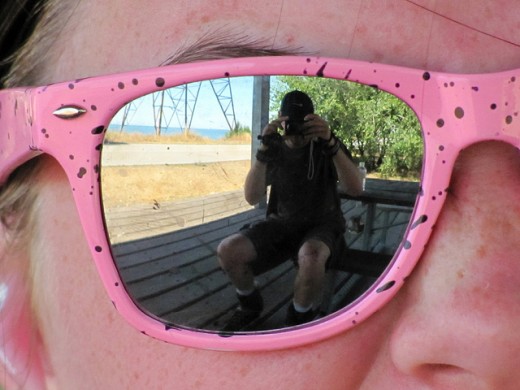
Description vs. Context
A man with long hair and a beard would be considered normal if your story takes place during viking times or in a Western. If your story happens during the 1960s or '70s then he's probably a hippie or a biker.
If your story setting is modern corporate America then he's probably rich or talented enough not to care about how he's perceived, and may also have a long history of folks telling him how he "should" dress. Does this irritate him or does he laugh it off?
During the Norman invasion of Britain, a bowl cut and shave could determine what side you're protagonist is on. During the Civil War? Gray coat or blue?
Does your character wear tight jeans? Lace? Pearls? Plaid?
Those tight jeans could be showing off your character's equally tight bottom, but maybe they're tight because he's wearing his brother's hand-me-downs.
Is the lace a beloved heirloom from grandma? Or part of an old fashioned bodice, designed to hide her bosom? Are the pearls sewn into her bodice? Part of a flapper's headdress? A congratulatory gift on the event of an anniversary or a child's birth?
Is the plaid skirt a traditional Scots "uniform" (including uniform nudity underneath? Wee!) or one from a parochial school?
Through Internal Dialogue
I clomped down the steps. What did I care if Sandra didn't like the retro look? As usual, I was wearing jeans and a paisley print shirt with the clogs, and my brown hair was in a long braid. Maybe tomorrow I'd borrow my brother's paint set and draw a butterfly on my cheek just to tick her off.
Remember, your character probably knows what they look like, even without them standing in front of a mirror. In Dark Moon Gates, I have my protagonist in the bathroom, but she's not even looking at the mirror, she's looking at her lens.
I took [the contact lens] out of my eye and rinsed the green-tinted lens. I was born with one green eye and one yellow one-inherited from my Dad's mom--but since I needed glasses anyway, why not have my eyes match? Bi-colored eyes sort of throw boys off. Not that boys pay much attention to me anyway--other than the monster-people boys. Its not my looks. Except for the eyes I'm acceptable-looking. I'm just too weird and unpopular. They'd be afraid of lowering their reputation by being seen with me.
Through Contrast
In Dark Moon Gates, I describe my main character by letting her describe another character in the story:
[Bria] was pretty in that slick and tailored way that neither Mom or I are good at. The kind of woman you don't know whether to admire or mess her hair up.
As an added bonus, I get a description of not just my protagonist, AND the antagonist, but the heroine's mom as well. A 3-in-one description!
In Little House in the Big Woods:
The storekeeper said to Pa and Ma, "That's a pretty little girl you've got there," and he admired Mary's golden curls. But he did not say anything about Laura, or about her curls. They were ugly and brown.
With Willa, we find that although she might like to be "slick and tailored," she's resigned to being who she is, and comfortable with it. Laura is obviously resentful of her looks, and remains so through much of the series.
Through Actions
I poked the needle through the cloth and again made a snarl of it. I frowned down at my fingers. Strong and fat, and reddened from doing the wash, they were more suited to hewing trees or pulling turnips than this delicate embroidery.
or
Darius sprinted up the ladder. I followed, rungs creaking dangerously beneath me and regretted that extra doughnut.
or
She lurched through the woods, as fast as she could. Her withered left leg refused to keep up with the healthy right one, and she tripped over a fallen branch. The dogs howled again, closer this time.
By Profession or Avocation
Your Sumo Wrestler will be a huge burly guy who's probably wearing a giant diaper. (I'm sure there's a name for that costume!)
A mountain climber or a pirate who needs to scramble up the rigging is likely toned and agile. An accountant may be taken as sedentary and gaining fat, unless we point out that he spends every morning at the gym.
Your professional ballerina is almost certainly underweight, and it's probable she has joint conditions, because, yeah, several schools of dance aren't exactly ethical about their training methods.
Football quarterback? It's almost positive he's tall and broad. Linebacker? Even bigger.
Banker? Conservative suits.
Detective?
Psych!
A detective can be any size or shape you want him/her to be. Trench coat, Deerstalker cap, magnifying glass and pistol are not required.
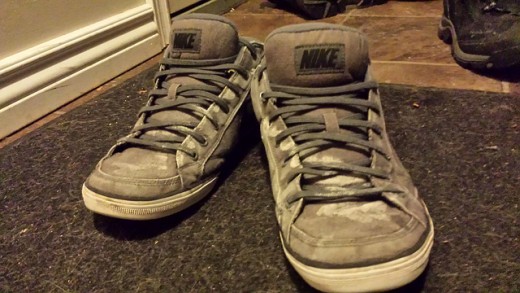
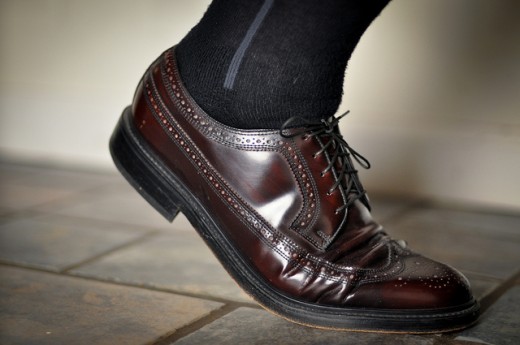
Clothes Make the Man (or Woman)
Zoot suit, red power tie or battered leather jacket?
Blue jeans, mini skirt or little black dress?
The choices our characters make in the way they dress, as well as the way we phrase that, changes how our readers will view and respond to them.
If our character is wearing a toga and he's not a senator from Rome, our reader is likely to see him as a (probably drunk) frat boy.
Blue jeans can connote the outdoors and a casual lifestyle. Or the paint-it-on-tight Jordache and Calvin Klein styles of the 80s.
The clothing choices your characters make (or aren't able to make) tell a great deal about them.
Wearing a blouse from the Salvation Army, with a small almost imperceptible stain? She's a far cry from the diva wrapped in rhinestones.
Are his boots brand new and shining, or scuffed but well oiled and loved? Or clotted with manure?
Patched? New? Expensive? Cheap? In or out of style? (And why?) Costume decisions tell us volumes about our characters, their economic status and their sense of self.
When Mirrors Work
If your character has never seen themselves in a mirror, doing the Mirror Scene may work. That's a big "may."
In Clan of the Cave Bear by Jean M. Auel, we already know that Ayla is a long-limbed, flat-faced, blonde Cro-Magnon child, in stark contrast to the heavy-browed, dark haired Neanderthals who have taken her in. When she finally sees herself reflected in a pool, the scene works because it helps her understand how "ugly" she is, and sets up her feeling of "otherness" that eventually leads her to being ostracized from the Clan.
Because the Mirror Scene has become so cliche, if you're going to use it, use it with purpose. Use it to describe the character's mental state more than, if not to exclusion of the physical, or to further the plot in some manner.
If your character is constantly checking the mirror, it suggests he's nervous about his appearance. Or maybe he's vain. Or perhaps the mirror itself is important in some way. It might be a family heirloom, or a portal to another world, or a device used by an evil queen to spy on, "the fairest of them all."
In Nenfari, looking in a mirror infuriates my protagonist because she realizes the ways that she both resembles but does not measure up to her mother, whose approval she has been trying-and failing-to win. And as she smashes her fist into that mirror, it leads to a crux point in the plot.
Or perhaps looking in the mirror makes your character realize that they've gone seriously off the deep end into crazy.
The shards of the mirror mocked him, throwing his reflection back in a thousand broken pieces. Here a slice of bruised and unshaven jaw, there blood dripping from the cut on his temple and matting into his hair, there an eye, blazing with maniacal fury.
Or maybe when your character looks in the mirror, someone is behind them and watching...
This article was originally published on NakedWithoutAPen on October 26, 2010
